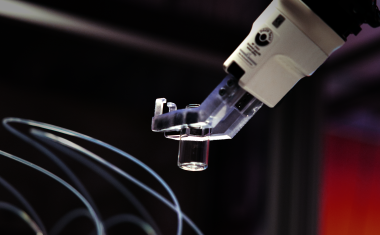China’s New Foreign Investment Law


Since the adoption of China’s Equity Joint Venture Law in 1979 and the Cooperative Joint Venture Law in 1998, China has maintained separate rules and processes for foreign-invested entities (FIEs) and Chinese-invested ones (CIEs). On Mar. 15, 2019, delegates of the second session of the 13th National People’s Congress took action to set aside those distinctions by approving China’s new Foreign Investment Law (the FI Law), which will abolish both the prior joint venture laws and the Law of Wholly Foreign-Owned Enterprises (WFOEs) of 2003.
The FI Law will come into effect on Jan. 1, 2020. The content of the new law has been tested in various “pilot zones” in China in recent years, and some of the principles underlying the law have previously been rolled out on a large scale. Nonetheless, the FI Law marks a nation-wide statement of significance for many chemical companies with entities in China.
According to the FI Law, all companies in China, whether foreign-invested or domestically-invested, generally will receive the same “national treatment”. In principle, this means that FIEs will be entitled to treatment that is no less favorable than that available for Chinese-invested ones. The key exceptions are industries on the “Negative List”, in which foreign investment will continue to be either prohibited or restricted. These industries include, e. g. automobile (until 2022), value-added telecommunications, internet publishing, news broadcasting, movie and show performances, banking and finance (restricted to joint ventures of no more than 51% foreign ownership until 2021), market surveys (joint ventures only), and others. This approach is significantly more convenient and more transparent than the current one in which restrictions on foreign investment may appear in the Catalogue of Industries for Guiding Foreign Investment, China’s WTO commitments, and industry restrictions in diverse regulations adopted by different government agencies.
The FI Law expressly extends to FIEs certain rights and privileges, including the right to enjoy State protection of foreign investments, the right to be consulted for recommendations in the adoption and interpretation of laws, the right to equal participation in standard development work, protection from expropriation except in accordance with statutory procedures, and the right to transfer money out of China in accordance with the law. The new law expressly prohibits the forced transfer of intellectual property by a Chinese counterpart in a joint venture or by a government authority. Many of these rights exist under current law. On the other hand, language that the rights enjoyed will be “in accordance with law” could, in effect, constrain the practices currently enjoyed by FIEs. For example, the quota system at times in place by banks in China restricting the conversion to foreign exchange has generally been applied less strictly to FIEs than to CIEs. In that case, equal treatment may not be beneficial. Nonetheless, in principle, articulation of these rights in one particular law is likely to prove helpful for FIEs.
For many investors in the global chemicals sector, the most relevant feature of the FI Law may be the mandate that in the future, the existing PRC Company Law will govern the relationship between joint venture partners, not the separate joint venture laws and regulations that currently govern those relationships. As a consequence, every existing joint venture in China must be amended to conform to the PRC Company Law. The FI Law allows a 5-year grace period (to January 2025) to make those changes, but given the challenges of negotiating with joint venture partners in China, international chemicals companies may want to focus on this issue sooner rather than later. The parties will need plenty of time to negotiate amendments to the joint venture agreements and the articles of association well in advance because corporate governance structures under the PRC company law differ materially from the current joint venture structures.
Under the PRC Company Law, the board of directors reports to the shareholders committee/meeting, whereas under the joint venture laws, the board of directors, not the shareholders committee/meeting, is the highest authority. Also under the FI Law, unless otherwise agreed, decisions may be made on the basis of majority vote, whereas the current joint venture laws require unanimous approval at the board level for any decision to (1) amend the articles of association, (2) increase or decrease the registered capital, (3) terminate or dissolve the company, or (4) merge or split the company. Accordingly, the board of directors of a chemicals joint venture under the FI Law will serve much the same function as is common in the West, rather than as the ultimate decision-making authority, with statutory minority protections as is the case currently.
The FI Law makes other important changes to existing law. For example, current laws apply only to the formation of new FIEs, whereas merger and acquisition (M&A) and other activities of FIEs are the subject of other regulations, and there are numerous other industry- and sector-specific regulations that apply only to foreign investors. By contrast, the FI Law applies to all direct and indirect investment, meaning that it will cover even investments in China made by an existing FIE. Also, for the first time, a foreign natural person may be an investor, whereas previously foreigners could invest only through legal entities.
Lastly, the FI Law specifies that if another country adopts discriminatory restrictions on Chinese investment, China may adopt corresponding measures depending on the circumstances. Critics of the new law assert that such explicit reservation of a right to retaliate when combined with the language elsewhere that the rights granted to FIEs are to be applied in accordance with applicable law could mean that in the event of a trade dispute, China has the right to take action against local FIEs. Whether that interpretation will prevail remains to be seen.
In large measure, the FI Law was passed in response to criticism from foreign governments and FIEs. It remains to be seen how it will be applied in practice, and how much change actually occurs. Nonetheless, for international chemicals companies with Sino-foreign joint ventures the new FI Law clearly merits attention. Though the 5-year grace period has been granted to amend existing joint venture contracts and articles of association, given the complex governance issues the new law presents and frequent negotiation difficulties in China, companies are urged to focus early on amending the necessary documents to allow time for negotiation with their joint venture partners in China.
Company
Squire Patton Boggs7 Devonshire Square
London EC2M 4YH
most read

Lead or Lag: Europe’s AI Materials Race
How AI and Robotics are reshaping the race for materials discovery.

ECA Foundation Aims to Become Largest Pharma Association for GMP/GDP Compliance
The ECA Foundation, one of the most important not-for-profit organizations for regulatory expertise in the pharmaceutical industry, aims to become the largest independent GMP/GDP organization in the world.

US Tariffs Fatal for European Pharma
Trump's tariff policy is a considerable burden and a break with previous practice.

Pharma 4.0—the Key Enabler for Successful Digital Transformation in Pharma
Part 3: Seven Theses for successful Digitalization in Pharma

Relocation of Chemicals Production Footprint in Full Swing
A new Horváth study based on interviews with CxOs of Europe’s top chemical corporations reveals: The majority of board members expects no or only weak growth for the current year.








